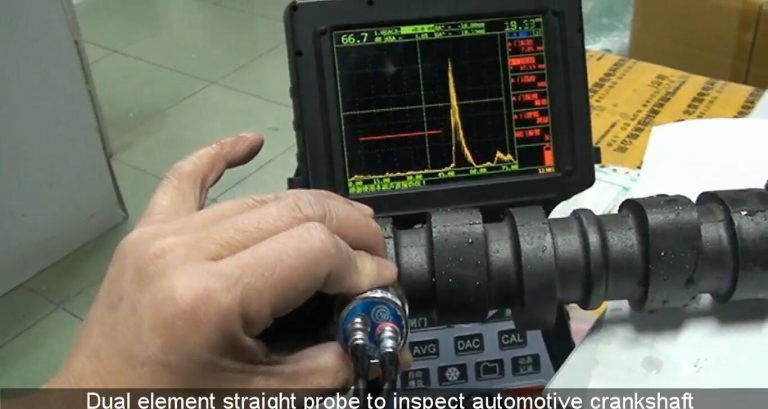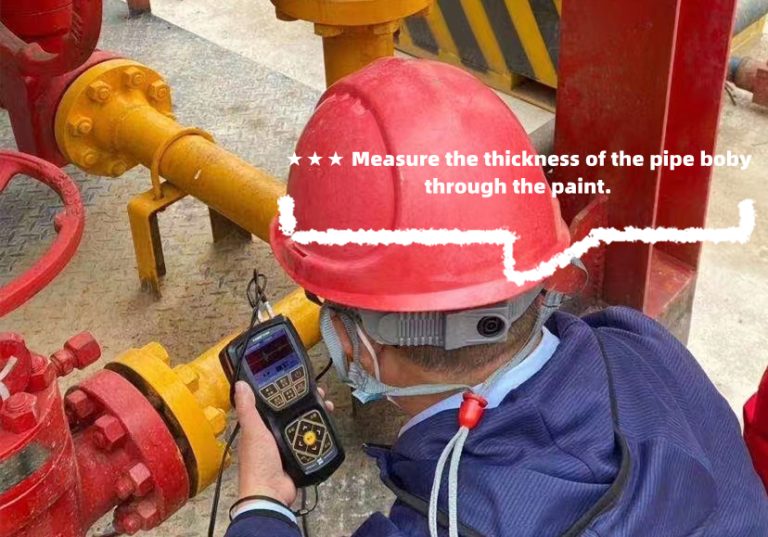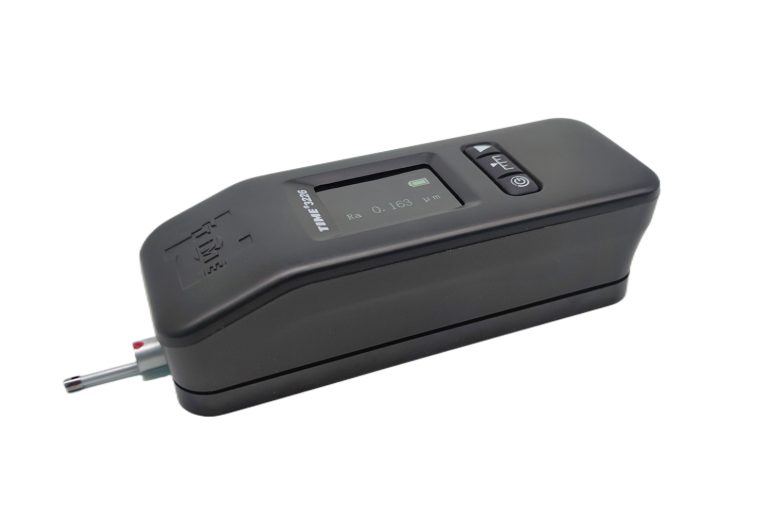Principle of ultrasonic thickness gauge thickness measurement through coating:
The longitudinal wave sound velocity in steel is typically 5.900m/s (0.2320in/us), but in paint or similar coatings the sound velocity is generally less than 2.500m/s (0.1000in/us). Conventional ultrasonic equipment will incorrectly measure the coating at the sound velocity of steel when measuring the total thickness of painted metal, which means that the coating will show a value of at least 2.35 times (the ratio of the two sound velocities) its true thickness. In cases involving thick coatings and close tolerances, this error introduced by the coating can be a large part of the total thickness measurement. The solution to this problem is to measure or calculate the thickness in such a way that the coating component is removed from the measurement.
Echo-to-echo measurement simply applies the well-established technique of the time interval between two adjacent backwall echoes, which represents the continuous round-trip travel time of the sound wave through the test material. In the case of coated metals, these multiple echoes can only occur in the metal and not in the coating, so the interval between any pair of echoes (backwall echo 1 to 2, backwall echo 2 to 3, etc.) represents only the metal thickness after the coating thickness has been removed. Through-coating measurements use a proprietary software to determine the time interval represented by a round trip through the coating. This time interval is used to calculate and display the coating thickness, and by subtracting this time interval from the total measurement, the instrument can also calculate and display the underlying metal thickness.

Each of the above techniques has advantages and disadvantages, and consideration should be given to which method is best for a particular application:
Through-coating measurement advantages:
- Can measure a wide range of metal thicknesses, typically from 1mm to 50mm in steel
- Only one echo is required
- Can more accurately measure the remaining minimum thickness in pitting situations
Through-coating measurement disadvantages: - The thinnest coating is 0.125mm
- The coating surface should be relatively smooth
- Requires one of two specific probes
- Maximum surface temperature is approximately 50°C or 51.67°C
Echo-to-echo measurement advantages: - Can work with a variety of common probes
- Can often work through rough surface coatings
- Can work at temperatures approaching 500°C or 498.89°C with appropriate probes
Echo-to-echo measurement disadvantages:
- Requires multiple bottom surface echoes, which may not be present in severely corroded metals
- Thickness range is more limited than through-coating measurement







